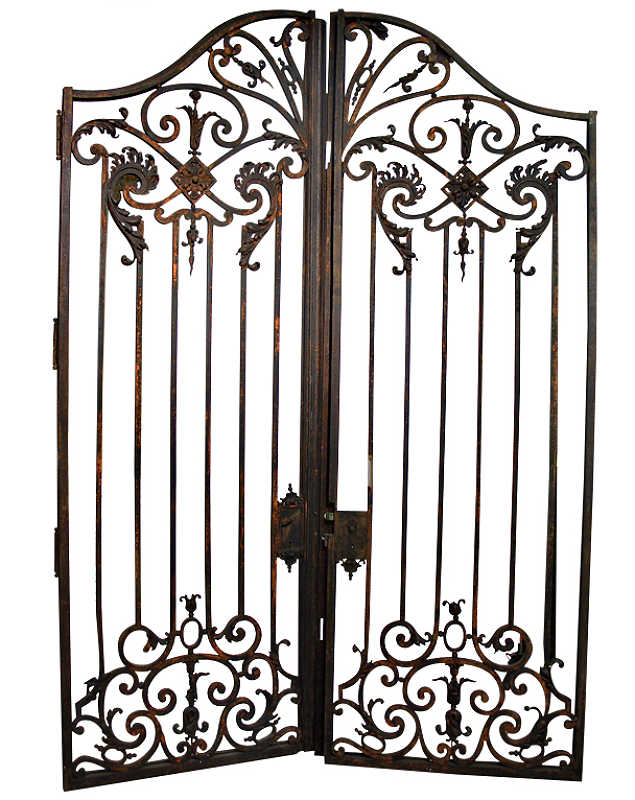Any room or residence looking to make a statement, seek no further than these enormous and imposing French wrought iron gates. At nearly nine feet high, and having already lasted well over a century, this is a piece fit to guard your fortress or palace with impunity and grace. The gently rusted patina gives them a sort of mysterious and experienced element that would suit the entrance to a grand, manicured lawn on an old estate. Decked out with classic, wrought iron acanthus leaves, a rectangular lock detailed with clamshell finnials, and other regal embellishments, these heavy gauge gates have a rich soul without being gaudy.
Wrought iron denotes the decorative and high quality aspect of this piece, specifically that the details are hand worked as opposed to being cast in a mold. Today this type of piece would almost certainly be entirely cast, and look cheap by comparison. You can often tell when pieces are cast because they exhibit rough edges where two halves of a detail are welded or screwed together. For example, the acanthus leaves and clamshells would be cast in two halves, and you’d be able to see an edge in the center. As this piece is wrought of solid iron instead of cast though, all the details are crisp and clean, ready to withstand the next century of wear and tear.
The French styling is apparent through its relative minimalism for the times. These gates may seem quite detailed in these days, but if these were Italian from the same era, there would likely be far more embellishment, and every corner would be festooned with some kind of sculptural detail. The Italians were also more likely to use literal imagery, for example mythical figures, or characters than the French, which tend toward the abstract leaves, and scrolls.
Available at Le Louvre French Antiques in Dallas.

